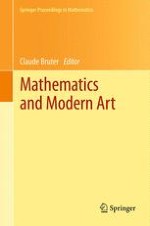2012 | OriginalPaper | Buchkapitel
Computer, Mathematics and Art
verfasst von : Jean-François Colonna
Erschienen in: Mathematics and Modern Art
Verlag: Springer Berlin Heidelberg
Aktivieren Sie unsere intelligente Suche, um passende Fachinhalte oder Patente zu finden.
Wählen Sie Textabschnitte aus um mit Künstlicher Intelligenz passenden Patente zu finden. powered by
Markieren Sie Textabschnitte, um KI-gestützt weitere passende Inhalte zu finden. powered by
